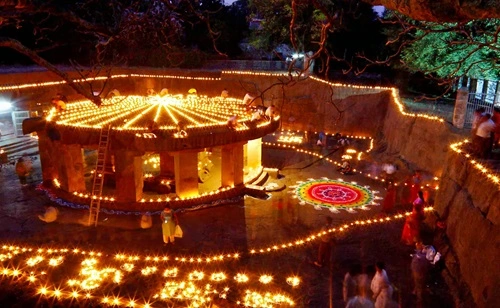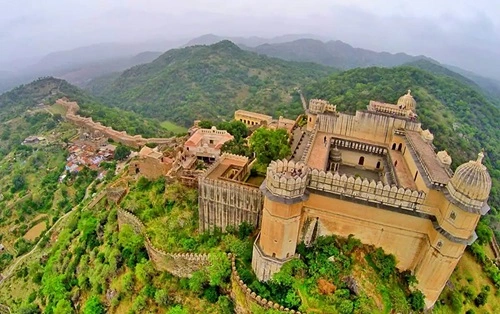Pune, the vibrant city of India’s western part, has always had a host of important centers since its independence. Although it still holds top rank as the hub for IT, Education, and Industry, Pune is also quite famous for its rich cultural heritage, typical traditions, and various secrets that are yet to be unraveled. Here are some of the unknown, interesting facts about Pune city that contribute to its uniqueness:
1. The Name ‘Pune’ was Derived From the Term ‘Punya’
All of them know that Pune stands at the confluence of two holy rivers, Mula and Mutha. Not all know that the name of the city is derived from the Sanskrit word ‘Punya’ which means the confluence of two holy rivers. Pune was named Poona, Punaka Desha, Punevadi, and Kasba Pune before taking the shape of modern Pune as we know it.
2. Poo͏͏na was the Original Name for Badminton
One of the exciting things for sports enthusiasts is that badminton was invented by the British in the city of Pune and named ‘Poona’ or ‘Poonah.’ The first set of rules for this game was drawn up in Pune in 1873, making this city quite important in the history of badminton.
3. Pune had India’s First Girls’ School
In 1848, pioneering Indian woman educator Savitribai Phule started India’s first girls’ school in Pune with her fellow organizer, Fatima Begum. This girls’ school has been an important milestone within the annals of Indian women’s empowerment and higher education and earned Pune the moniker ‘The Oxford of the East.’
4. National Defence Academy (NDA) is Located in Pune
NDA or National Defence Academy, is situated at Khadakwasla, which accommodates defence cadets. It is the world’s first academy that imparts joint training to the cadets of the Army, Navy, and Air Force. NDA is not just a very reputed defense training institute but also a pride for the country due to its outstanding infrastructure.
5. The World’s Biggest Turban
Shailesh Yadav, from Pune, set a world record by making the world’s largest turban, also referred to locally as a ‘pagdi.’ It measured a height of 10 feet and a diameter of 30 feet; this has put Pune on the map for outstanding cultural records.
6. Pune Finds Its Historic Entity Since the 10th Century
Pune remained the seat of the Bonlhe Marathas during their entire reign till the British takeover in the year 1817. During the 17th century, the first mention of Pune was in a copper plate dating to 937 CE, referred to as ‘Punya-Vishaya,’ meaning sacred news. The city’s rich heritage is depicted by the many forts, palaces, and historical sites that are spread around this city.
7. Birthplace of Famous Saints and Highly Learned Scholars
Pune is the birthplace of lots of great personalities, including the poet-saint Tukaram and Jnaneshwar, who wrote the ‘Jnaneshwari’ commentary on Bhagavad Gita. It has, therefore, been endowed with abundant spiritual and scholarly heritage, attracting pilgrims and seekers of knowledge over the ages.
8. Pune: Travel Back in Time
Pune is chiefly known for its 17 ‘Peths’ or localities that form the heart of the city. The Sadashiv Peth, Shukrawar Peth, and Budhwar Peth were some of the core areas laid out during the Maratha and Peshwa times. Each Path has its history associated with it, while most of them have been named either after the days of a week or after the name of their founders. A walk through the Pune Paths gives one a feeling of being transported to another age.
9. Pune is the Cultural Capital of Maharashtra
Referred to as the cultural capital of Maharashtra, Pune is also noted for its penchant for education, arts, music, theatre, and crafts. Many cultural happenings and festivals in Pune show the diversity of its traditions mixed with modern influences.
10. Patalaeshwar Cave Temple: An Unknown Treasure

The Cave Temple of Pataleshwar is an ancient rock-cut temple situated on Jangli Maharaj Road and is devoted to Lord Shiva. It was cut out from a single monolithic rock during the 8th century under the Rashtrakuta Dynasty and is said to have been constructed by the Pandavas in a few hours during their exile. Being a work of excellent craftsmanship, the temple is well preserved by the Archaeological Survey of India at present times.
11. Pune-Mumbai Expressway: India’s First High-Speed Corridor
Also called Yashwantrao Chavan Expressway, the Pune-Mumbai Expressway connects Pune with Mumbai and has been constructed as the first six-lane, high-speed, access-controlled toll expressway in India. The road measures 94.5 km and is considered a marvel of modern engineering that saves a lot of time between the two cities.
12. Pune Is the Home to India’s Tallest Family
Pune is home to the Kulkarni family, which holds the national record of being India’s tallest family in the Limca Book of Records. The family members comprise Sharad Kulkarni, who measures 7ft 1.5in in height; his wife Sanjot, 6ft 2.6in; and their two daughters, with the total length of their heights reaching 26 feet.
Final thought
Pune effortlessly blends tradition with modernity. From its ancient roots as the capital of the Maratha Empire to its present status as a thriving cultural and economic hub, Pune indeed has bundles of surprises. Be it the name, Badminton, or height – all have fables to be discovered in this city. If you’re looking for a city that is full of culture, history, and innovation, then Pune is your destination.



